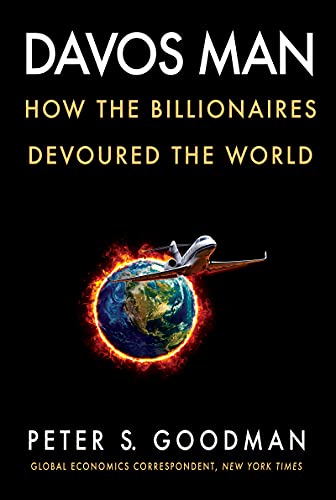A good overview of the recall election at the Los Angeles Times, and I love the lamentations of the article.
See, "San Francisco’s bitter D.A. recall could set back national justice reform movement."
If Boudin's recall --- which is apparently a near sure-thing --- sets back the "national justice reform movement," then that'll be one of the most significant electoral victories of 2022.
And Nancy Rommelman, who, according to Reason Magazine, is "a journalist and author based in New York City," has a new on-the-ground report on Substack, here: "Time's Arrow: The Chesa Boudin Recall."
RTWT.
Especially good is her email exchange with San Francisco Police Department Patrol Sergeant Adam Plantinga, who in reply listed the reasons he supports Boudin's ouster:
Let me front-load that I'm not a political animal and I'm not an SF voter, so what I say doesn't matter as much as folks who live in the city or who are more plugged in to such matters. But as a San Francisco cop, I am, of course, invested in the outcome. 1. He implemented a policy prohibiting his office (with very few exceptions) from charging cases where the police find contraband during pretextual stops. His reasoning for this was to reduce racial disparities. I believe, as do most working cops, that pretextual stops, when done right (you don't have to treat everyone like John Dillinger), are essential to smart proactive policing and get a lot of bad actors off the street. Criminals don't tend to turn themselves in to you. You have to go find them. And pretextual stops are one of the very best ways to do that. I believe his policy is harmful to public safety. 2. He campaigned on not charging quality-of-life crimes and as far as I know, has been true to his word. I'm not for nickel-and-diming every hobo, for Illegal Lodging, who sets up camp on a public sidewalk, but if there are no teeth to the law, it eliminates an important tool from the cop's tool belt. Wondering if Boudin would feel differently if a transient set up camp in front of Boudin's garage, blocking him from driving to work every day. Maybe he'd just shrug and take the bus. At least then, he'd have the courage of his convictions. 3. His refusal to charge gang enhancements and three strikes. It's no secret that street gangs are behind much of the violent crime in the city and repeat violent felons have proven, time and time again, that they should not be among people. They should be spending their criminally productive years in jail. So let's put them there. An old-fashioned view, to be sure, but I work one of the most violent sections of the city and you see enough blood and brains on the sidewalk, it can get a fella to thinking this way. 4. He has made some highly questionable decisions in charging officers on Use of Force cases (to be fair, he's made some other decisions in charging cops that I don't find unreasonable). On a related note, I am an officer who has over two decades of experience, doesn't rattle much under pressure, and tends to make good decisions in the field, but I have little hope that I would receive a fair shake from Chesa Boudin's office if I were to be involved in a serious Use of Force that resulted in serious injury or death to a suspect. Maybe that's not fair--maybe my case would have a just outcome. But that's how I feel and that's a pretty shitty feeling to be walking around with at work with a gun on your hip and continually having to enter volatile situations to take on people with weapons. I'm not alone in feeling that way. 5. He is a former Public Defender and still clearly has a Public Defender mentality (examples of this abound, including a recent interview where he talked about how a high percentage of drug dealers in SF are being trafficked from Honduras). This makes him the classic fox in the henhouse. What if we flipped things around? I don't imagine the Public Defender's office would be overjoyed in having a former DA head up their office who still had a tough-on-crime DA's attitude. It's a lousy fit in our adversarial criminal justice system. 6. I don't claim to have the insider's view on the DA's office. I know they are understaffed and overworked and plea bargains are essential to making the system go. Cops will probably always feel like the DA's office isn't doing enough and tends to be soft on crime. Many of us felt that way about the last few DAs. But ADAs under Boudin have been leaving in droves, which I find telling, and folks who do have an insider's view, Assistant District Attorneys that I've worked on cases with and respect, including Brooke Jenkins*, Thomas Ostly*, and Shirin Oloumi, have strongly spoken out against Boudin. Their words carry a lot of weight with me. 7. I have yet to meet another police officer who thinks Boudin is the right person for DA. Maybe we're all wrong and Boudin alone is right, the lone prophet in the wilderness, whose genius will not be known in our time. But maybe not.






